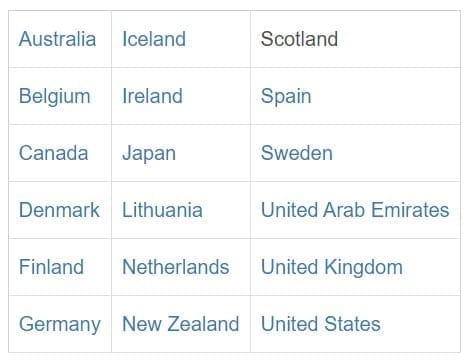
Image by lookstudio on Freepik
The four-day work week is proving to be a popular incentive for today’s workers.
A four-day work week UK study shows that employees were 71% less burned out, 39% less stressed and 48% more satisfied with their job after the trial than before.
Sixty percent of the workers said it was easier to balance work and responsibilities at home. This also resulted in 73% reporting increased satisfaction with their lives. Fatigue was down, people were sleeping more and mental health improved, the findings show.
Many trials of having a four-day work week, instead of five, have been quite positive. It appears that working one less day per week can help improve mental and physical health, while sustaining productivity.
Furthermore, workers of all ages appear to benefit from having more time away from work.
Versions of the 4-Day Workweek
There are generally two versions of a 4-day workweek. Both versions leave a full-time worker’s pay and benefits in place.
In the first model, an employee works the same number of hours, usually 40, spread over four days instead of five. Consequently, each of the four workdays has 10 hours instead of eight.
In the second model, the total number of required hours is shortened as well as the number of days per week. So, an employee works 20% fewer hours in 20% fewer days. However, their productivity must remain the same.
This model can be referred to as ‘100 – 80 – 100′, meaning 100% pay – for 80% of the time – with 100% productivity.
Creative Scheduling
Some companies are not organized in a way to offer everyone a three-day weekend each week. But through creative scheduling, their workers still got the benefits of working fewer hours.
For example, some worked longer hours in parts of the year and shorter hours the rest of the time to make an average 32-hour week. According to the study results, company revenue wasn’t affected.
At Northampton-based creative agency Amplitude, the four-day week is optional: employees now work a flexible, reduced 35-hour week that can be split across four or five days.
Iceland Led the Way
Between 2015 and 2019, Iceland conducted the world’s largest pilot of a 35 to 36-hour workweek without any calls for a commensurate cut in pay. Some 2,500 people took part in the test phase.
The pilot was dubbed a success by researchers and Icelandic trade unions negotiated for a reduction in working hours.
Japan
In 2019, Microsoft experimented with the model by offering employees three-day weekends for a month.
The move boosted productivity by 40% and resulted in more efficient work.
Belgium Hopes to Raise Employment
In November 2022, Belgian employees were offered the choice of working either four or five days per week. For them, the total number of hours stayed the same.
A prime goal of the government’s plan is to increase the country’s employment rate. Belgium has a lower employment rate than its neighbors, so by offering the workdays choice, the government is hoping to see 80 out of 100 people employed by 2030, compared to 71 out of 100 today.
Scots Are Fulfilling a Political Promise
The Scottish National Party (SNP) made a campaign promise to cut the five-day workweek to four days and reduce required hours. As a result, Scottish workers in 2023 will have their hours reduced by 20% while they keep their full pay.
The SNP supports the participating companies with about £10 million fund.
Wales is Interested
Wales is currently considering a similar plan. “It is a bold proposal but no bolder than those campaigners who fought for a five-day week, paid holiday, and sick pay which we now take for granted,” said Jack Sargeant, Chair of the Petitions Committee within the Senedd (Welsh parliament).
Growing Happiness and Cutting Emissions in the UK
Workers at more than 60 UK companies trialed a four-day work week between June and December 2022. Among nearly 3,000 employees, 71% reported feeling reduced levels of burnout; there were also improvements in physical health and wellbeing.
Ninety-two percent of the employers said they would continue with a shorter workweek following the trial – with 30% making the change permanent.
Additionally, the report by the 4 Day Week campaign found that shifting to a four-day work week without loss of pay could shrink the UK’s carbon footprint by 127 million tons per year by 2025, a reduction of 21.3%.
The group argues that the 9-to-5, five-day work week is outdated and no longer fit for purpose. They say, “We invented the weekend a century ago and are long overdue for an update to working hours.”
Trials Around the World
These countries are currently active in testing the four-day work week.

Strong interest in the US and Canada
According to a survey by Qualtrics, 92% of US workers are in favor of a shortened workweek, even if it means working longer hours.
The employees surveyed cited improved mental health and increased productivity as the perceived benefits.
Seventy-four percent say they would be able to complete the same amount of work in four days. However, 72% say they would have to work longer hours on workdays to do so.
As a result of the pandemic, 41% of Canadian employers are considering alternative schedules and new work styles (Indeed).
Indeed’s survey of 1,000 employers of office workers in Canada found that 51% of large companies with 500+ employees would be “likely to implement 4-day workweeks”.
It’s Not ‘One Size Fits All’
The four-day workweek isn’t an automatic solution for all. Some of the negative feedback includes:
Added Stress
- “Without having a fifth day to catch up on work, there’s generally more stress now during the week in order to have a longer weekend.”
More Work for Management
- “We found that when it was someone’s turn for their day off, the buck passed to a colleague. Then they were left under pressure. Alternatively, an absence would come up to management, so we’d effectively have to just do daily tasks. This resulted in our longer-term projects and strategic work going out the window.”
Three Days Off Together is Impossible
- “The busiest days at the contact centre are usually Mondays and Fridays, meaning it’s not possible for them to take time off either side of the weekend. The knock-on effect is that it leaves only three days left for staff to take their extra day off.”
Complex, Interwoven Operations
- “We have 220 employees: I can’t imagine that we’d allow a four-day for some and not for others. Rather than size, the difficulties with the four-day week come in a business’s complexity – when you have different ways of operating and offer varied services.”
Intense Workloads
- “Without reducing the intensity of workloads and tackling overworking more broadly, a mass scale four-day week risks intensifying already intense workloads,” said Abigail Marks, professor of the future of work at Newcastle University Business School. “A six-hour workday may be more effective than a four-day week among organisations that are able to do so.”
Related Stories:
- Remote Work is Changing Real Estate
- Not Getting a Month of Paid Vacation? Consider Moving Abroad
- All Ages Benefit from Post-Pandemic Workforce Changes
- Raising The Retirement Age – U.K. Government Considers Again
- Differences UK and US Expats Find in the Other Country
Share this story



